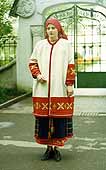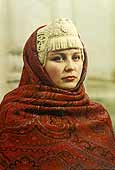The Museum Collections
Introduction
I. History and Art Collection
1. Icons of the 14th – 19th centuries
icons of the 14th – 17th century
2. Jewelry art of the 14th – 20th century
jewelry art of the 14th – 17th century
jewelry art of the 18th – 19th century
the european silver 14th - 19th centuries
3. Small-size sculptures (works of metal, wood, bone)
XI – the beginning of the XX century
Small-size sculptures 11th – 17th century
Small-size sculptures 18th – early 20th century
enamel of Troitza masters 15-8th – early 20th century
5.Embroidery, lace, textiles of the 14th - early 20th century
icon and ornamental embroidery
gold and silver lace
6.Painting of the 18th – 21st centuries
painting of the 18th – 19th centuris
painting of the 20th – 21st centuris
II.Manuscripts and old printed books of the 14th – 17th century
IV.Lithography of the 18th – 19th century
V.Numismatics
VI.Medals of the 18th - early 20th century
VIII.Archeology collection
IX. Russian folk and applied and decorative art of the 17th – 21st c.
1. Artistic wood
folk carved and painted wood
wooden toys
house carving of Sergiev Posad
Khokhloma and Gorodets painting
2. Artistic textiles
embroidery and weaving
printed textiles and lace
Russian shawls
folk costumes
folk garments
printed cotton kerchiefs
|
Folk garments collection (p. 2)
|
Wedding garments were carried out from the most expensive materials, with special carefulness, frequent with attraction of professional skilled workers which sewed with a gold and silver thread, strung from beads separate elements of a suit. However, after a birth of the first-born young peasant woman had no right to dress these costumes.
In olden time spoke: «in what to get married, in that to die». In many places the tradition of use of wedding garments as the funeral remained prior to the early of 20th century. In the Sergiev-Posad museum the ceremonial garments intended for funereal-memorial cases are stored. In those settlements where widows to the end of their life wearied the sorrow dress, each woman had to four, differing on degree of mourning, complete sets of such clothes.
The Sergiev-Posad museum has the richest collection of female headdresses of 18th – early 20th centuries. Northern kokoshniks, povoiniks, embroidered from brocade, silk and velvet and decorated with small and large pearls, nacreous grains, multi-coloured glasses, simulating jewels, especially marked out with the strict beauty. As a rule, them prepared for wedding and dressed with wedding sundresses.
South Russian “kichka” (kind of headdresses) with the pair small horns towering over a head of the woman or hidden under soft hats – “soroka” with gold ‘ochelye” (especially ribbon on forehead) says to us that a “horness” of headdresses is a symbol of female fruitfulness (child-bearing).
|

Female celebratory costume. Early 20th century. Ryazan province |

Female headdress – “kikha”. 19th century. Olonetsky province |

Man's wedding shirt. Late 19th - early 20th centuries. Tambov province |
The man's peasant garments also are available in our museum, but not in such variety, as female. Basically, it is shirts and the belts prepared by the bride for the groom to a wedding celebration. Among them and a shirt – “naked-neck“ (without a collar or with a small rack on a collar), and Russian shirts (with collar fastening on one side) remained in a considerable quantity.
Òraditionally, shirts were decorated along the edges of sleeves and a hem woven, by embroidered patterns quite often added with a white or colour lace, print stripes, beads and spangles. The most interesting copies descend from Kursk, Voronezh, Penza, Vyatsk, etc. provinces.
The collection of national garments in Sergiev-Posad museum-preserve brightly reflects original lines of a costume of Russian peasant of 19th- early 20th century caused by a centuries-old way of life of the people, and its representations about kind, useful and beauty.
V.M.Zhiguleva
|
|


